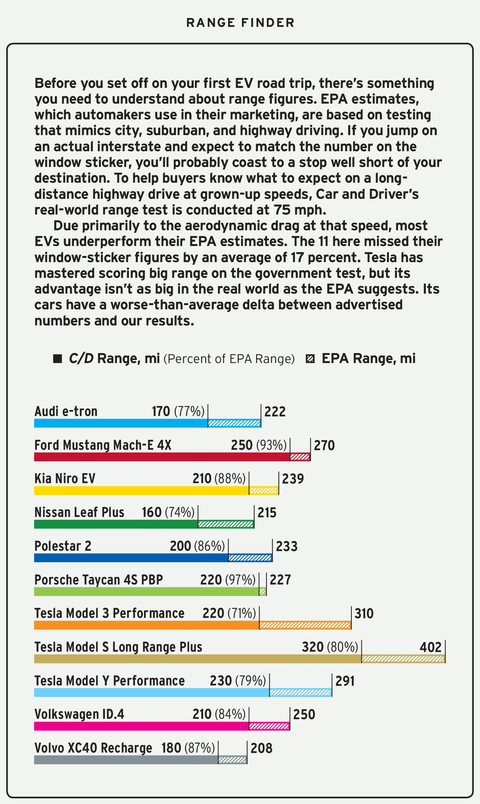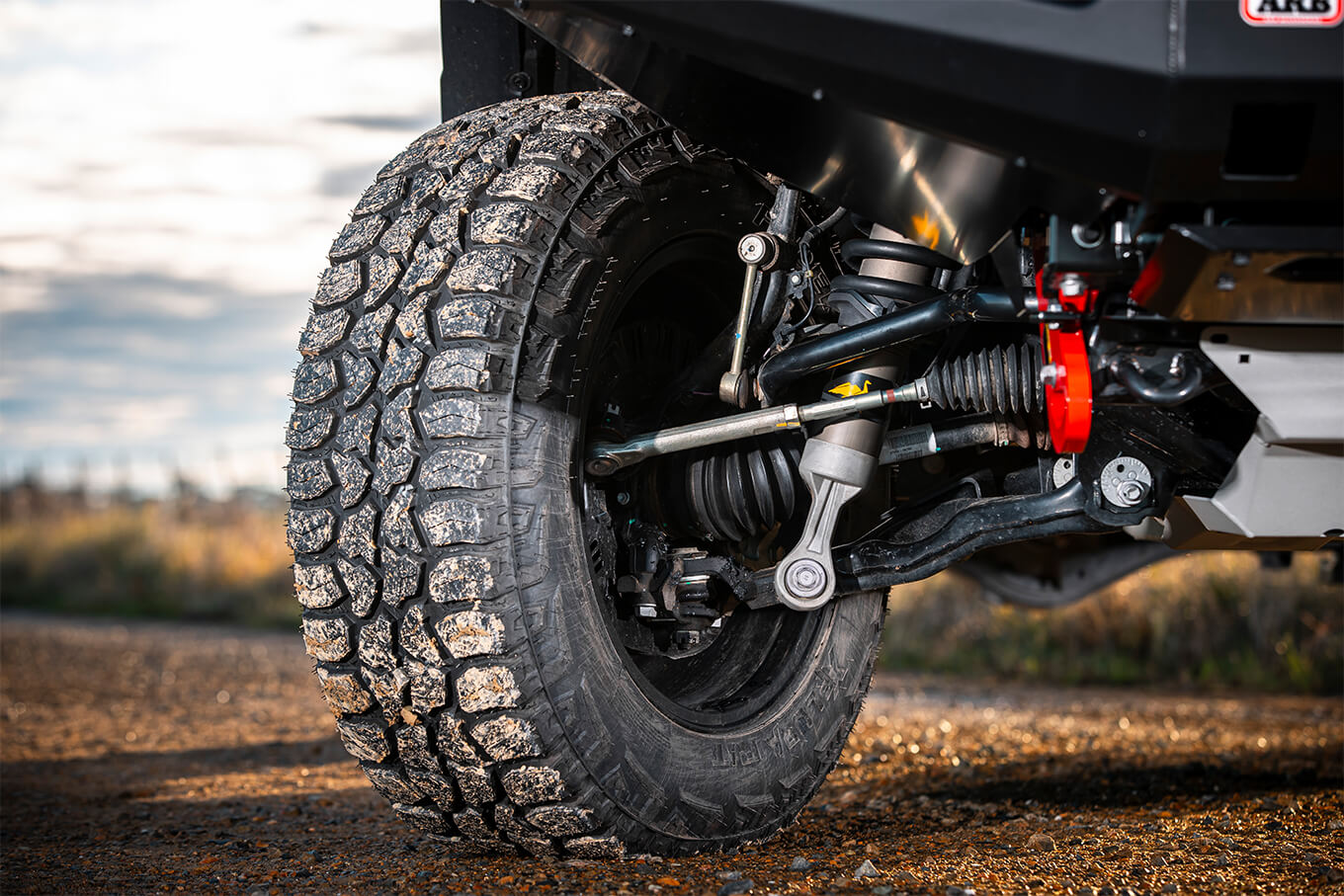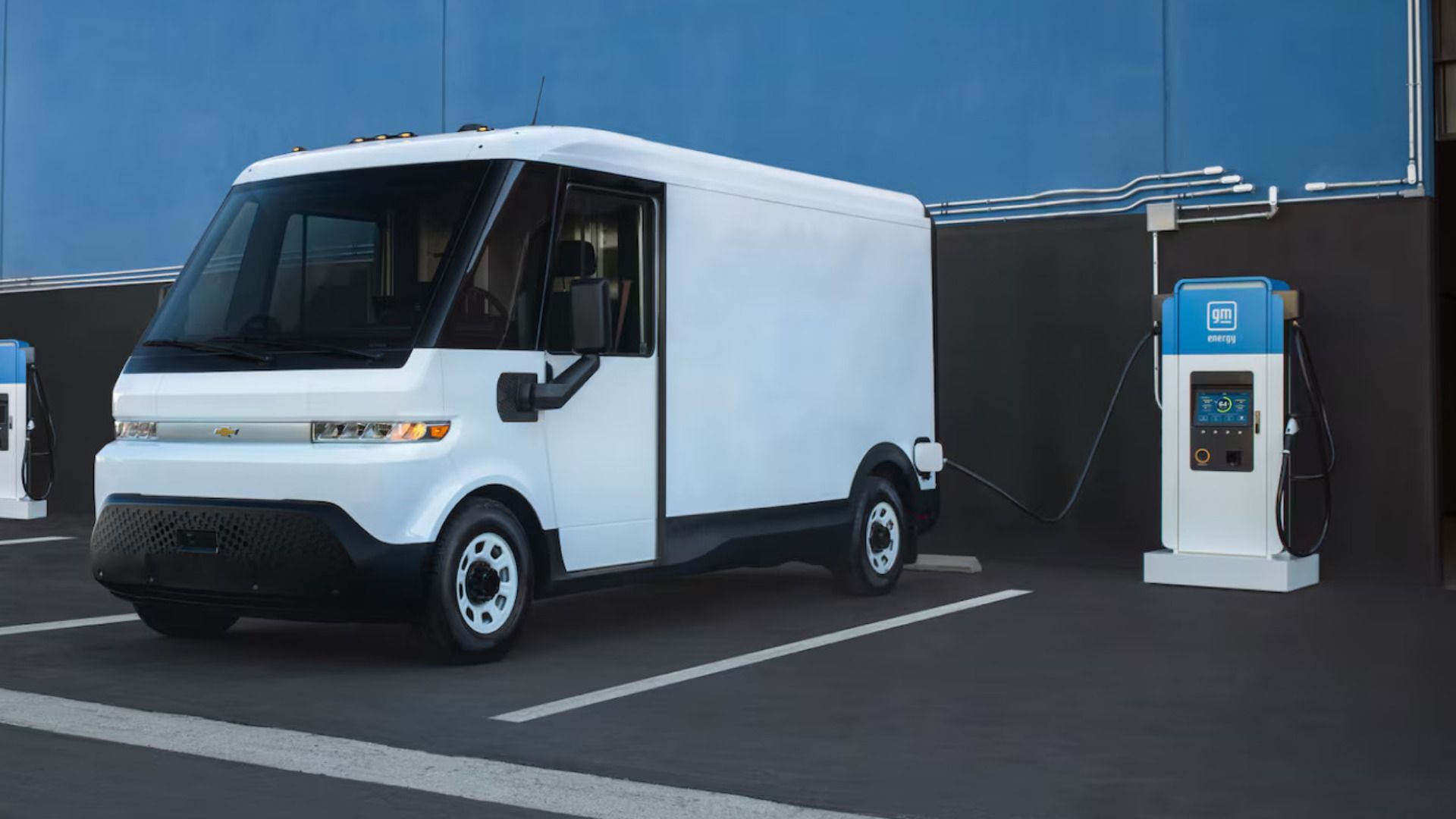2021 Car and Driver EV of the Year: The Contenders
Welcome to the New Frontier. Battery prices continue to drop, multiple nationwide fast-charging networks exist, and the world’s largest automakers are finally building electric vehicles that you might want to buy not out of guilt or a sense of moral obligation, but because they’re truly desirable. The time has come: Electric vehicles are primed to go mainstream.
Despite this progress, the electric frontier is still a wild, orderless place. There are four different plugs in play. The patchwork public infrastructure is littered with broken or painfully slow equipment and has vast dead zones if you stray too far from major interstates. And while we look forward to the day when we can write about a new EV without dwelling on its range, many new models still can’t clear 200 miles on the highway.
To make sense of this transition period, we rounded up all the EVs we could get our hands on and put them through instrumented testing, subjective evaluation, and side-by-side comparisons. We measured real-world range with our 75-mph highway test and plugged in to DC fast-chargers to see how quickly today’s EVs can refuel. We staged a 1000-mile rally to find out how those two factors would come together on a road trip. Closer to home, we drove back roads and city streets and poked touchscreens and dash covers. Then we compared our impressions and cast our votes to determine the best.
We picked our winner based on the same criteria we use to decide Car and Driver‘s 10Best awards. Our EV of the Year is an excellent value, fun to drive, and better at fulfilling its purpose than any other vehicle in its class. To those guiding principles, we added a fourth factor: At this critical moment, our EV of the Year should advance the state of the art. That could mean raising the bar on driving range, lowering the price of entry in a segment, or delivering more driver engagement than the competition. However that manifests, the year’s best electric car needs to make EVs more enticing to drivers.
After testing 11 vehicles over three weeks, we can confirm that automakers are pushing into new territory. In terms of both practicality and entertainment value, today’s best EVs are capable of serving as your only vehicle if you do a little planning. And one EV is more qualified than all the others. But first, in no particular order, the competition . . .
Volkswagen ID.4
Polestar 2
Nissan Leaf Plus
Tesla Model Y Performance
Kia Niro EV
Audi e-tron
Porsche Taycan 4S
Volvo XC40 Recharge
Tesla Model S Long Range Plus
Ford Mustang Mach-E
The Electric Kool-Aid Acid Test: Tesla Model 3 Performance
Either the Tesla Model 3 Performance will get you hyped about EVs or nothing will.
If Tesla has proved anything, it’s that electric cars don’t have to be boring. The Model 3 Performance has the power, tires, and brakes of a proper sports sedan, and it can set your pulse racing as fast as any gas-powered four-door.
Not a believer? Floor it from a stop. Now try a few 30-to-50-mph pulls. This is a car that flirts with 1.00 g both on the skidpad, with a 0.96-g effort, and in its acceleration, where it punches the gut like Tyson in the ’80s. It blasts to 60 mph in 3.1 seconds, with an instant response and all-wheel-drive traction that give it an off-the-line advantage over the 760-hp Ford Mustang Shelby GT500.
It’ll go sideways, too. In Track mode, the driver can adjust the torque split to favor the rear wheels (or the fronts). Also, the Performance model allows the driver to do something other Teslas won’t: completely disable stability control. The Model 3’s small-diameter steering wheel is direct and precise, creating a sense of lightness that’s unusual among EVs. Hustling the 3 Performance down a ribbon of asphalt triggers an endorphin rush, but road noise and the electric motors’ subdued whir leave your ears wanting. Our eyes were also left wanting when they noticed the large gap around the hood of our test car, a too-common Tesla build-quality issue.
Tesla’s rethinking of norms is equal parts brilliant and confounding. That big touchscreen combined with the company’s vast Supercharger network makes finding a place to top up a low-stress affair. But tapping a glass screen to activate the windshield wipers will never make sense, no matter how many times we do it.
The EPA estimates the 3 Performance will travel up to 310 miles on a charge. In our 75-mph real-world test, however, Teslas tend to miss their window-sticker numbers by larger margins than most EVs. We achieved 220 miles in our range run—still a strong showing, but those fuddy legacy automakers are starting to bridge Tesla’s moat.
The Model 3 Performance is a glimpse into the future of electric cars, and we like what we see. At an as-tested $66,190, the Model 3 costs less than other high-powered sports sedans such as the BMW M3 and Mercedes-AMG C63. But those gas burners offer a more emotional, if less quick, experience. Tesla will drive the final nail in the coffin of internal combustion when it figures out how to make the EV driving experience as gratifying as that of a hot-rod sedan, including the sounds. If the turn signals can be programmed to make fart noises, we don’t think we’re asking for too much. —Connor Hoffman
Specifications
Base/As Tested: $58,190/$66,190
Front Motor: induction AC, 176 hp
Rear Motor: permanent-magnet synchronous AC, 255 hp
Battery Pack: liquid-cooled lithium-ion, 81.0 kWh (C/D est)
Onboard Charger: 11.5 kW
Transmissions: direct-drive
Curb Weight: 4072 lb
C/D TEST RESULTS
60 mph: 3.1 sec
1/4-Mile: 11.6 sec @ 115 mph
Results above omit 1-ft rollout of 0.3 sec.
Top Speed (mfr’s claim): 162 mph
Braking, 70–0 mph: 147 ft
Roadholding, 300-ft Skidpad: 0.96 g
EPA FUEL ECONOMY
• Comb: 116 MPGe
• Range: 310 mi
Back to the top
The People’s Other Car: Volkswagen ID.4
Aimed at the heartland, the Volkswagen ID.4 could use a little more heart.
Inside, the ID.4 has a familial resemblance to other Volkswagens, but it’s sprinkled with enough ultramodern touches to feel special, if a little annoying. Seriously, VW, you couldn’t give the driver dedicated switches for the rear windows?
Like the three-row Atlas and the big, sensible Passat, the ID.4 smacks of a German brand trying to satisfy what it thinks are American tastes. If this leaves you a bit cold, help is on the way. A more powerful ID.4 with a second motor and all-wheel drive is coming soon. —Drew Dorian
Specifications
Base/As Tested: $41,190/$45,190
Motor: permanent-magnet synchronous AC, 201 hp, 229 lb-ft
Battery Pack: liquid-cooled lithium-ion, 77.0 kWh
Onboard Charger: 11.0 kW
Transmission: direct-drive
Curb Weight: 4700 lb
C/D TEST RESULTS
60 mph: 7.6 sec
1/4-Mile: 16.0 sec @ 86 mph
Results above omit 1-ft rollout of 0.3 sec.
Top Speed (gov ltd): 101 mph
Braking, 70–0 mph: 168 ft
Roadholding, 300-ft Skidpad: 0.85 g
EPA FUEL ECONOMY
• Comb: 97 MPGe
• Range: 250 mi
Back to the top
Simple Machine: Polestar 2
The Polestar 2 strips the idea of a car down to the basics.
If EVs are our future, Volvo spinoff Polestar takes a guarded approach to what’s next. Its Polestar 2 seemingly draws from modernist architecture, with a palette dominated by gray tones reminiscent of concrete and steel. Exterior styling is restrained and free of gimmicks. This is essentially tomorrow’s Volvo.
The Android-based infotainment system featuring a voice-activated Google Assistant is simple to operate, and the most commonly used touchscreen controls are easy to find.
Our test car’s adjustable Öhlins dampers refine the ride, but the 2 will change from laid-back city commuter to eager corner carver when asked. Ample punch from the 408-hp electric motors rockets the car to 60 mph in 4.1 seconds. However, the 200-mile range we recorded in our 75-mph test can’t match the segment’s top end. By combining otherwise strong performance with clean design, Polestar offers a practical alternative to its more audacious electric competitors. —Connor Hoffman
Specifications
Base/As Tested: $61,200/$66,200
Front Motor: permanent-magnet synchronous AC, 204 hp, 243 lb-ft
Rear Motor: permanent-magnet synchronous AC, 204 hp, 243 lb-ft
Combined Power: 408 hp
Combined Torque: 487 lb-ft
Battery Pack: liquid-cooled lithium-ion, 75.0 kWh
Onboard Charger: 11.0 kW
Transmissions: direct-drive
Curb Weight: 4714 lb
C/D TEST RESULTS
60 mph: 4.1 sec
1/4-Mile: 12.7 sec @ 109 mph
Results above omit 1-ft rollout of 0.3 sec.
Top Speed (gov ltd): 125 mph
Braking, 70–0 mph: 157 ft
Roadholding, 300-ft Skidpad: 0.90 g
EPA FUEL ECONOMY
• Comb: 92 MPGe
• Range: 233 mi
Back to the top
The OG EV: Nissan Leaf Plus
The Nissan Leaf Plus falls to the competition.
With a 215-mile EPA range, the most powerful Leaf falls short of the Chevrolet Bolt, Kia Niro EV, Tesla Model 3, and Volkswagen ID.4, all of which have CCS fast-charging ports. Plugs for the Leaf’s CHAdeMO connection are harder to find in the wild. The system also struggles to restore electrons at the advertised rate.
In top SL Plus guise, the Leaf is a heady $44,920, a mere $905 less than a similarly optioned Niro EV, only $270 below the ID.4 1st Edition, and—gulp—$3730 more than the standard-range Model 3. The cheapest big-battery Leaf, at $39,220, makes a lot more sense. Once a pioneer, this EV needs a price cut or a redesign (or both) to carve out space to survive. —Maxwell B. Mortimer
Specifications
Base/As Tested: $39,220/$45,705
Motor: permanent-magnet synchronous AC, 214 hp, 250 lb-ft
Battery Pack: liquid-cooled lithium-ion, 59.0 kWh (C/D est)
Onboard Charger: 6.6 kW
Transmission: direct-drive
Curb Weight: 3933 lb
C/D TEST RESULTS
60 mph: 6.7 sec
1/4-Mile: 15.4 sec @ 91 mph
Results above omit 1-ft rollout of 0.3 sec.
Top Speed (gov ltd): 101 mph
Braking, 70–0 mph: 184 ft
Roadholding, 300-ft Skidpad: 0.78 g
EPA FUEL ECONOMY
• Comb: 104 MPGe
• Range: 215 mi
Back to the top
Y, Though?: Tesla Model Y Performance
A sloppily built Tesla Model Y Performance leaves us wondering what all the fuss is about.
Why do so many adjustments in Tesla’s Model Y require twice the number of steps we’re used to? Why is the charging plug different from what all other automakers use? Why is the Y so much worse than the Model 3?
Every Tesla provokes a few head-scratchers, but this particular Model Y Performance left us flummoxed. If you drive the 3 and the Y back to back, you’ll find little to convince you they share a platform. Where the 3 is smooth, the Y jerks. This may seem harsh, just like this Tesla’s ride, but it didn’t help that the infotainment system on the Y we tested stopped working within 12 hours of the car’s arrival. Sloppy fit and finish and a grating squeak coming from the right rear seat were reminders that no two Teslas are identical.
Why is the Model Y so popular, then? In Performance trim, it will launch to 60 mph in 3.6 seconds, and the small-diameter steering wheel requires a firm hand, creating the illusion of sport. The real appeal is more rational, though. Cruising at 75 mph, the Y can go 230 miles between plug-ins, and buyers have access to a second-to-none DC fast-charger network that gives this EV the legs to be someone’s only car. But between Electrify America’s growing charging network and the long-range EVs from Ford and Volkswagen, there’s no longer a reason why Tesla should own this segment. —K.C. Colwell
Specifications
Base/As Tested: $61,190/$72,190
Front Motor: induction AC, 178 hp
Rear Motor: permanent-magnet synchronous AC, 240 hp
Battery Pack: liquid-cooled lithium-ion, 81.0 kWh (C/D est)
Onboard Charger: 11.5 kW
Transmissions: direct-drive
Curb Weight: 4439 lb
C/D TEST RESULTS
60 mph: 3.6 sec
1/4-Mile: 12.1 sec @ 113 mph
Results above omit 1-ft rollout of 0.3 sec.
Top Speed (mfr’s claim): 155 mph
Braking, 70–0 mph: 154 ft
Roadholding, 300-ft Skidpad: 0.94 g
EPA FUEL ECONOMY
• Comb: 111 MPGe
• Range: 291 mi
Back to the top
The Sleeper: Kia Niro EV
More capable than it appears, the Kia Niro EV is too often overlooked.
We also like how the Niro goes down the road. The steering feels right, and the ride is reassuringly firm. What the interior lacks in luxury is made up for in practicality; the infotainment system is easy to use, and the back seat and cargo area are spacious. With the right incentives or a price closer to the base EX’s $40,265, this Kia would be a prime choice in the affordable-EV world. —Joey Capparella
Specifications
Base/As Tested: $40,265/$47,145
Motor: permanent-magnet synchronous AC, 201 hp, 291 lb-ft
Battery Pack: liquid-cooled lithium-ion, 64.0 kWh
Onboard Charger: 7.2 kW
Transmission: direct-drive
Curb Weight: 3915 lb
C/D TEST RESULTS
60 mph: 6.2 sec
1/4-Mile: 14.9 sec @ 94 mph
Results above omit 1-ft rollout of 0.3 sec.
Top Speed (gov ltd): 107 mph
Braking, 70–0 mph: 176 ft
Roadholding, 300-ft Skidpad: 0.88 g
EPA FUEL ECONOMY
• Comb: 112 MPGe
• Range: 239 mi
Back to the top
Quiet Progress: Audi e-tron
The Audi e-tron doesn’t look like a vision of the future, but maybe that’s the point.
Besides its robotic name, there’s little to suggest the Audi e-tron portends the future. Sure, this 402-hp electric SUV literally sounds like something Han Solo would pilot. But the e-tron and its swoopy-roof Sportback counterpart could be mistaken for other Audis in a parking lot.
The conventional design, which includes a palatial cabin, should make the switch to electric a bit easier for some, although new EV customers might want more than the e-tron’s 222 miles of estimated range. In our 75-mph highway test, the Audi went just 170 miles before needing a recharge. However, in our fast-charging test, it sucked down electricity faster than any other EV, although some more efficient cars were able to add driving miles quicker.
The 5.2-second run to 60 isn’t terribly impressive for an $87,440 vehicle, and if one-pedal driving is your bag, the Audi won’t regen aggressively enough for you. But the build quality, handsome appointments, and tranquil driving experience are worthy of attention. More traditional than trendy, the e-tron is designed to be unthreateningly familiar. —Eric Stafford
Specifications
Base/As Tested: $66,995/$87,440
Front Motor: induction AC, 184 hp, 228 lb-ft
Rear Motor: induction AC, 224 hp, 262 lb-ft
Combined Power: 402 hp
Combined Torque: 490 lb-ft
Battery Pack: liquid-cooled lithium-ion, 86.5 kWh
Onboard Charger: 9.6 kW
Transmissions: direct-drive
Curb Weight: 5856 lb
C/D TEST RESULTS
60 mph: 5.2 sec
1/4-Mile: 13.8 sec @ 101 mph
Results above omit 1-ft rollout of 0.3 sec.
Top Speed (mfr’s claim): 124 mph
Braking, 70–0 mph: 181 ft
Roadholding, 300-ft Skidpad: 0.85 g
EPA FUEL ECONOMY
• Comb: 78 MPGe
• Range: 222 mi
Back to the top
Transcending Electrons: Porsche Taycan 4S
The Porsche Taycan 4S Performance Battery Plus isn’t a typical electric vehicle.
Between its talkative, perfectly weighted helm and the way its controls cocoon the excellent driving position, the Taycan’s essence revolves around its pilot, bringing a rich sense of over-the-road intimacy. Though not insanely rapid, the Taycan 4S is invigorating and maintains a few welcome ties to conventional sports sedans. The two-speed automatic on the rear axle provides a satisfying upshift. The bulk of the car’s regenerative braking is activated via the brake pedal, rather than from just letting off the accelerator, which means you exercise the left pedal as you would in an internal-combustion vehicle. An available whirring sci-fi soundtrack adds excitement to the quiet act of electric motoring; some may like the effect more than others.
Porsche charges handsomely for the 4S’s optional rear-axle steering, active anti-roll bars, and carbon-ceramic brakes, but the resulting sports-car-like grip (1.03 g’s) and braking ability (147 feet from 70 mph) are as impressive as the car’s unflappable composure and comfortable ride. As a transportation device, a Tesla Model S—the Taycan’s chief rival—will take you farther on a charge and accelerate just as quickly for significantly less money. But the harmony in which the Taycan 4S’s performance, refinement, and style come together on the road means it’s more than an electrified conveyance. Beyond the badge on its nose, this is what makes it a Porsche. —Mike Sutton
Specifications
Base/As Tested: $111,730/$143,690
Front Motor: permanent-magnet synchronous AC
Rear Motor: permanent-magnet synchronous AC
Combined Power: 562 hp
Combined Torque: 479 lb-ft
Battery Pack: liquid-cooled lithium-ion, 83.7 kWh
Onboard Charger: 11.0 kW
Transmissions, F/R: direct-drive/2-speed automatic
Curb Weight: 5128 lb
C/D TEST RESULTS
60 mph: 3.4 sec
1/4-Mile: 11.7 sec @ 120 mph
Results above omit 1-ft rollout of 0.2 sec.
Top Speed (gov ltd): 155 mph
Braking, 70–0 mph: 147 ft
Roadholding, 300-ft Skidpad: 1.03 g
EPA FUEL ECONOMY
• Comb: 77 MPGe
• Range: 227 mi
Back to the top
Power Up: Volvo XC40 Recharge
The Volvo XC40 Recharge is a better small SUV, but it’s not a better EV.
The difference between the powertrains is obvious when you pass a left-lane dawdler or pull away from a stoplight. While the gas-powered XC40 tops out at 248 horsepower, the EV version has an eager 402 horses, needs a mere 4.3 seconds to leap to 60 mph, and scoots from 50 to 70 mph in 2.2 seconds.
The Recharge’s effortless quickness helps justify its $55,085 base price, but its 75.0-kWh battery pack is good for only 208 miles between charges, according to the EPA. At a steady 75 mph, you’ll need to plug in after 180 miles. Luckily, thanks to an upgraded infotainment system that employs easy-to-use Google software with voice recognition, finding a charging station is as easy as saying, “Hey, Google, find a charging station.”
This SUV’s problem is that Tesla sells a Model Y that costs less and goes farther. Volvo’s EV may be more fun to drive than a gas XC40, but without more range, it isn’t much of a threat to Tesla. —Annie White
Specifications
Base/As Tested: $55,085/$59,780
Front Motor: permanent-magnet synchronous AC, 201 hp, 243 lb-ft
Rear Motor: permanent-magnet synchronous AC, 201 hp, 243 lb-ft
Combined Power: 402 hp
Combined Torque: 486 lb-ft
Battery Pack: liquid-cooled lithium-ion, 75.0 kWh
Onboard Charger: 11.0 kW
Transmissions: direct-drive
Curb Weight: 4791 lb
C/D TEST RESULTS
60 mph: 4.3 sec
1/4-Mile: 12.9 sec @ 108 mph
Results above omit 1-ft rollout of 0.3 sec.
Top Speed (gov ltd): 113 mph
Braking, 70–0 mph: 171 ft
Roadholding, 300-ft Skidpad: 0.84 g
EPA FUEL ECONOMY
• Comb: 79 MPGe
• Range: 208 mi
Back to the top
Enduring Persistence: Tesla Model S Long Range Plus
Hiding its age well, the Tesla Model S Long Range Plus manages to stay out in front, most of the time.
In the world of new cars, going a decade without a complete overhaul is a near guarantee of obsolescence. So how has the Tesla Model S endured? Starting as a trendsetter—both in range and in instigating today’s mania for ever-larger infotainment screens—certainly helps. Thanks to a steady stream of improvements, the Model S has remained at the front of the pack in terms of its ability to cover miles.
For this test, we wrangled the Long Range Plus variant, the first EV to crest 400 miles on a charge according to the EPA’s methodology. With a 20 percent range boost over the 2018 100D, this Model S is also the current champ of our 75-mph highway test and the only EV in the 300s, at 320 miles. Available for only the 2020 and 2021 model years, the Long Range Plus features a number of enhancements over earlier Model S iterations. An electric oil pump replaces a mechanical unit on the rear motor, the battery pack holds about 3 percent more energy, and Tesla claims that gearbox improvements and a new aerodynamic wheel design boost range by 2 percent each.
It still drives with the verve of a competent luxury sedan, even with efficiency-minded all-season tires. Although this is the slowest Model S, the hearty shove on tap and its 3.5-second sprint to 60 mph are anything but.
The price of the S has been plummeting apace with the range gains. Three years ago, if you wanted the longest-range Model S, you had to shell out at least $97,200. Tesla has since knocked that down by more than $25,000, to $70,620 for the Long Range Plus. However, on the facelifted S that’s launching this year, the Long Range variant will replace the Plus as the base offering and kick the ask back up to $81,190.
A front-motor failure sidelined our 3600-mile car in the middle of testing. The owner begged his way into an overbooked Tesla service center, which swapped in a new motor just in time for our 1000-mile road trip, but the Model S’s fate was already sealed. We couldn’t in good conscience name the Model S our EV of the Year when, almost a decade on, Tesla is still building cars with these problems. —Dave VanderWerp
Specifications
Base/As Tested: $70,620/$70,620
Front Motor: permanent-magnet synchronous AC, 275 hp, 310 lb-ft
Rear Motor: induction AC, 282 hp, 247 lb-ft
Battery Pack: liquid-cooled lithium-ion, 104.0 kWh (C/D est)
Onboard Charger: 11.5 kW
Transmissions: direct-drive
Curb Weight: 4824 lb
C/D TEST RESULTS
60 mph: 3.5 sec
1/4-Mile: 11.9 sec @ 116 mph
Results above omit 1-ft rollout of 0.2 sec.
Top Speed (gov ltd): 159 mph
Braking, 70–0 mph: 172 ft
Roadholding, 300-ft Skidpad: 0.86 g
EPA FUEL ECONOMY
• Comb: 117 MPGe
• Range: 402 mi
Back to the top
The Prophet: Ford Mustang Mach-E
Foreshadowing a future when an electric vehicle’s range is secondary to how it drives, the Ford Mustang Mach-E is our EV of the Year.
If an automaker wanted to convert people from EV skeptics to EV evangelists, it’s hard to imagine a better vehicle for the job than the Ford Mustang Mach-E. That’s why it’s our 2021 EV of the Year. The Mach-E arrives in the familiar shape and size of the crossovers Americans love, at a price that competes with gas-powered alternatives, and with a design that gets noticed. It has the range and charging speed to wave off the most common EV criticisms, and thanks to Electrify America’s recent work, there’s a nationwide charging network that makes long interstate trips not just possible but tolerable. For new EV converts, piloting a Mach-E isn’t so different from driving a gas-burning SUV that it feels foreign, yet the experience is futuristic enough to be exciting. It’s the right car to bring drivers along during this watershed moment as EVs transition from niche alternative to new normal . . . Read the full story on Car and Driver‘s 2021 EV of the Year, the Ford Mustang Mach-E.
Back to the top
Here’s Why We Didn’t Include That One EV You Believe Should Have Won It All
For this inaugural test, we intended to evaluate every EV that’s currently on the market. If a vehicle’s not here, you can safely assume it wasn’t available. While several highly anticipated models hadn’t launched in time for our April event (e.g., the GMC Hummer EV and the BMW i4), some absences warrant explanation.
Jaguar says it will sell only electric vehicles starting in 2025, and General Motors aims to do the same by 2035. Yet neither made its current EVs available to us. Why? Jaguar simply declined to send an I-Pace, a decision we’re still puzzled by. Chevrolet, which let us drive its new Bolt EUV a month earlier, said it didn’t have the engineering signoffs to allow a car out of its sight for three weeks. The refreshed 2022 Bolt EV (which is slightly smaller than the Bolt EUV) was also unavailable, and Chevy didn’t want to send a 2021 model.
The story was similar at Hyundai. Since the refreshed 2022 model wasn’t yet out, the company chose not to field a Kona Electric. A rep also told us that Hyundai didn’t want to provide an Ioniq with the Ioniq 5 so close to market. BMW and Mini kept their respective 153-mile i3s and 110-mile Cooper SE parked, presumably spooked by the prospect of how they would perform on a 1000-mile road trip. Audi and Porsche had only Europe-spec models of the e-tron GT and Taycan Cross Turismo in the United States and wouldn’t hand either of them over for extended testing.
Tesla, which disbanded its PR department in 2020, didn’t provide a single vehicle. Instead, we rented the Model 3, S, and Y from private owners for this test, and we decided to skip the slow-selling, expensive Model X. We also reached out to startups that are hoping to replicate Tesla’s success. Rivian, Bollinger, Lordstown, and Lucid all said their EVs weren’t ready for our scrutineering. Maybe next year.
This content is created and maintained by a third party, and imported onto this page to help users provide their email addresses. You may be able to find more information about this and similar content at piano.io












